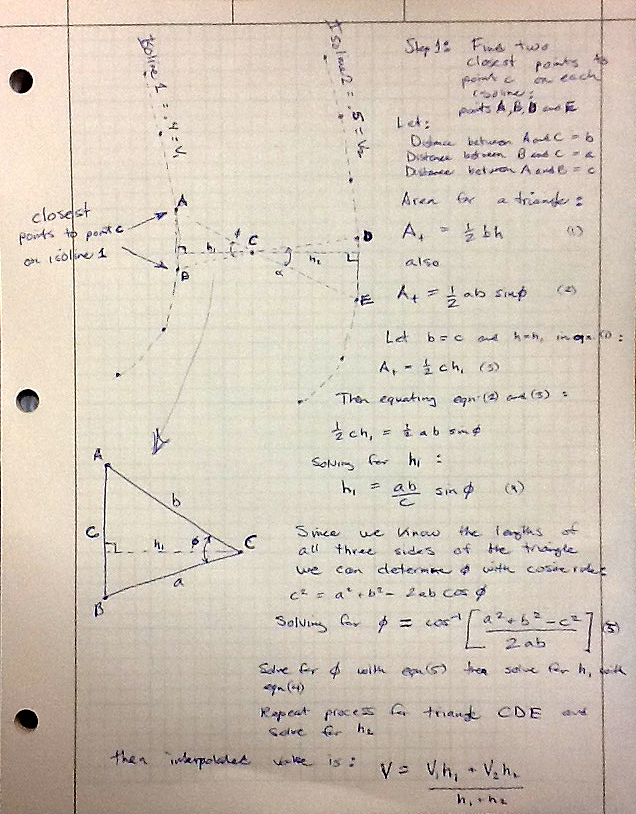Computational Geometry Problem:
You have two isolines defined by a finite number of coordinate points (x,y) spaced at fairly regular intervals. You then place a random point between these two isolines, at some known coordinate (x1,y1). What is the most accurate method of linear interpolation to determine the value of the point between the isolines?
The inaccuracy in determining the value is due to the approximate nature of the discrete points defining the isolines. However, there are ways to deal with this. I have a devised a fairly simple algorithm for doing this however I would be interested to see what others might come up with and whether it might provide a more accurate and less computationally expensive method than my own.
You have two isolines defined by a finite number of coordinate points (x,y) spaced at fairly regular intervals. You then place a random point between these two isolines, at some known coordinate (x1,y1). What is the most accurate method of linear interpolation to determine the value of the point between the isolines?
The inaccuracy in determining the value is due to the approximate nature of the discrete points defining the isolines. However, there are ways to deal with this. I have a devised a fairly simple algorithm for doing this however I would be interested to see what others might come up with and whether it might provide a more accurate and less computationally expensive method than my own.

